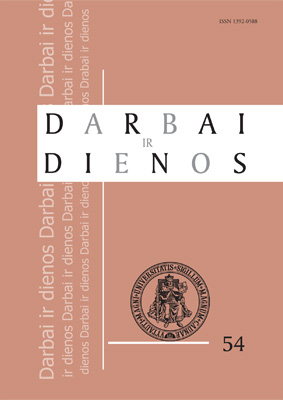Homo Letticus: Locality and Ethnicity as two Dimensions of Latvian Identity
Homo Letticus: Locality and Ethnicity as two Dimensions of Latvian Identity
Author(s): Svetlana RyzhakovaSubject(s): Cultural Essay, Political Essay, Societal Essay
Published by: Vytauto Didžiojo Universitetas
Keywords: locality; ethnicity; identity; Latvia; lokalumas; etniškumas; tapatumas; Latviųja
Summary/Abstract: The tendencies of poetization, politicization and consumerization of ethnicity as well as its manufacturing in various national projects and mass-media as the basis for a national identity today faces a certain ideological crisis. That is why Latvian cultural and political elite makes a pronounced emphasis on different forms of “calculation”, “listing” and “canonization” of Latvian national culture, which includes “Latvian ethnicity” as the most important element. Poetical imagination combines ecological and rational thinking expressed in the lists of “cultural idiosyncrasies” by poet Imats Ziedonis, which are nothing but local variations of banalities that may serve as cultural markers or even “ethnical brands” in transnational consumer society (Ziedonis 2006). One of the recent initiatives, the Canon of Latvian National culture (an elaborate project launched by the Ministry of culture in 2008 on the example of a similar Danish and Dutch experience), is thought to pin down the characteristic features of “Latvian style” as manifested in ideology and Latvian cultural politics. Nowadays the Baltic republics have started implementing different programmes that aim at modernizing their societies and their countries into modern European national states. Even if they feel irresistibly drawn to the modern imagery, in Latvia one can observe that the longing for retaining the sense of their own uniqueness through cultural forms and discourses has remained a powerful impulse. Žvelgiant į kultūrinius stereotipus, metaforiškai priskiriamus homo letticus, galima išskirti keletą vadinamojo latviškumo aspektų. Pirmasis sietinas su lokalumu: Latvijos teritorija, ypač kaimo vietovės (lauki), suvokiamos kaip ideali Latvijos „erdvė“. Pastovi ir nekintanti gyvenamoji vieta Latvijoje – vienas būdingiausių nacionalinės kultūros ir istorijos bruožų, susiformavusių XX amžiuje. Antras latviškumo aspektas apima etines ir elgesio normas, kurių laikydamasis individas „elgiasi“ kaip latvis. Ypač svarbus bendravimas latvių kalba. Tautinio stiliaus estetika turi didelę reikšmę, ji būdinga visiems Latvijos gyventojų socialiniams sluoksniams. Vaizdingų kaimo vietovių nacionalizavimas atskleidžia latvių ir gamtos ryšį (dzimtenīga noskaņa). Valstietiškajam latvių tapatumui būdingas atšiaurumas. Tvarka (sakoptība, kartība), grožis (daile), atitikimas (piedienība), tam tikrų spalvų derinimas atsižvelgiant į esamas aplinkybes formuoja latviškumą. Būti latviu reiškia atitikti būdingas vizualios kultūros ir kasdieninio gyvenimo normas.
Journal: Darbai ir dienos
- Issue Year: 2010
- Issue No: 54
- Page Range: 121-126
- Page Count: 6
- Language: English

